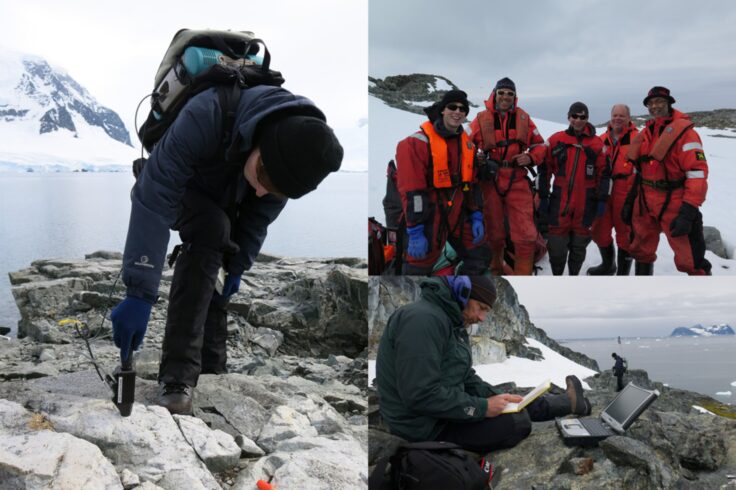Automated lithological mapping using airborne hyperspectral remote sensing
Automated lithological mapping using airborne hyperspectral remote sensing
- Start date
- 1 October, 2012
- End date
- 31 March, 2016
Antarctica is a unique and geographically remote environment. Field campaigns in the region encounter numerous challenges including the harsh polar climate, steep topography, and high infrastructure costs. Additionally, field campaigns are often limited in terms of spatial and temporal resolution, and particularly, the topographical challenges presented in the Antarctic mean that many areas remain inaccessible. For example, despite more than 50 years of geological mapping on the Antarctic Peninsula, there are still large gaps in coverage, owing to the difficulties in undertaking geological mapping in such an environment. Hyperspectral imaging may provide a solution to overcome the difficulties associated with field mapping in the Antarctic.
Hyperspectral imaging collects and processes information from across the electromagnetic spectrum. The goal of hyperspectral imaging is to obtain the spectrum for each pixel in the image of a scene, with the purpose of finding objects, identifying materials, or detecting processes. Much as the human eye sees visible light in three bands (red, green, and blue); hyperspectral imaging divides the spectrum into hundreds of bands and is extended to regions of the electromagnetic spectrum beyond visible light.
The British Antarctic Survey and partners collected the first known airborne hyperspectral dataset in the Antarctic in February 2011. Multiple spectrometers were simultaneously deployed imaging the visible, shortwave and thermal infrared regions of the electromagnetic spectrum. Additional data was generated during a field campaign in January 2014, with the deployment of multiple ground spectrometers collecting data in coincident visible, shortwave and thermal infrared regions. The project has focused on determining techniques for exploiting the large volume of spectral information present in hyperspectral images, with a view to developing automated lithological mapping tools to aid in the geological investigations, detailed lithological mapping and provide guidance for future hyperspectral campaigns.
Martin Black is funded by a Natural Environment Research Council (NERC) PhD studentship in conjunction with the British Antarctic Survey and the University of Hull (NERC Grant: NE/K50094X/1).

Hyperspectral data
The Hyperspectral Data used was collected during an airborne survey funded by the UK Foreign and Commonwealth Office (FCO) and conducted by the British Antarctic Survey, ITRES Research Ltd. and Defence Research & Development Suffield, Canada in February 2011.
Field spectral data
To support analysis of an extensive airborne hyperspectral dataset a campaign to collect ground spectral data from several islands in the Ryder Bay area of Antarctica was undertaken in January and February 2014. With support from the NERC Field Spectroscopy Facility, and collaborators at DRDC and ITRES, multiple spectrometers were deployed within the Ryder Bay Islands and surrounding sites on Adelaide Island (close to the British Antarctica Survey’s main research station at Rothera Point). A total of almost 1000 spectra were acquired in the field. It is anticipated the ground spectral data acquired will prove invaluable during the analysis of the airborne data, as the ground spectral data allows for robust characterisation of the spectral features of major lithological, biological and vegetation targets within the context and resolution of the aerial imagery.
Publications
M. Black, T.R. Riley, G. Ferrier, A.H. Fleming, P.T. Fretwell, Automated lithological mapping using airborne hyperspectral thermal infrared data: A case study from Anchorage Island, Antarctica. Remote Sensing of Environment, 176, p225–241 doi:10.1016/j.rse.2016.01.022